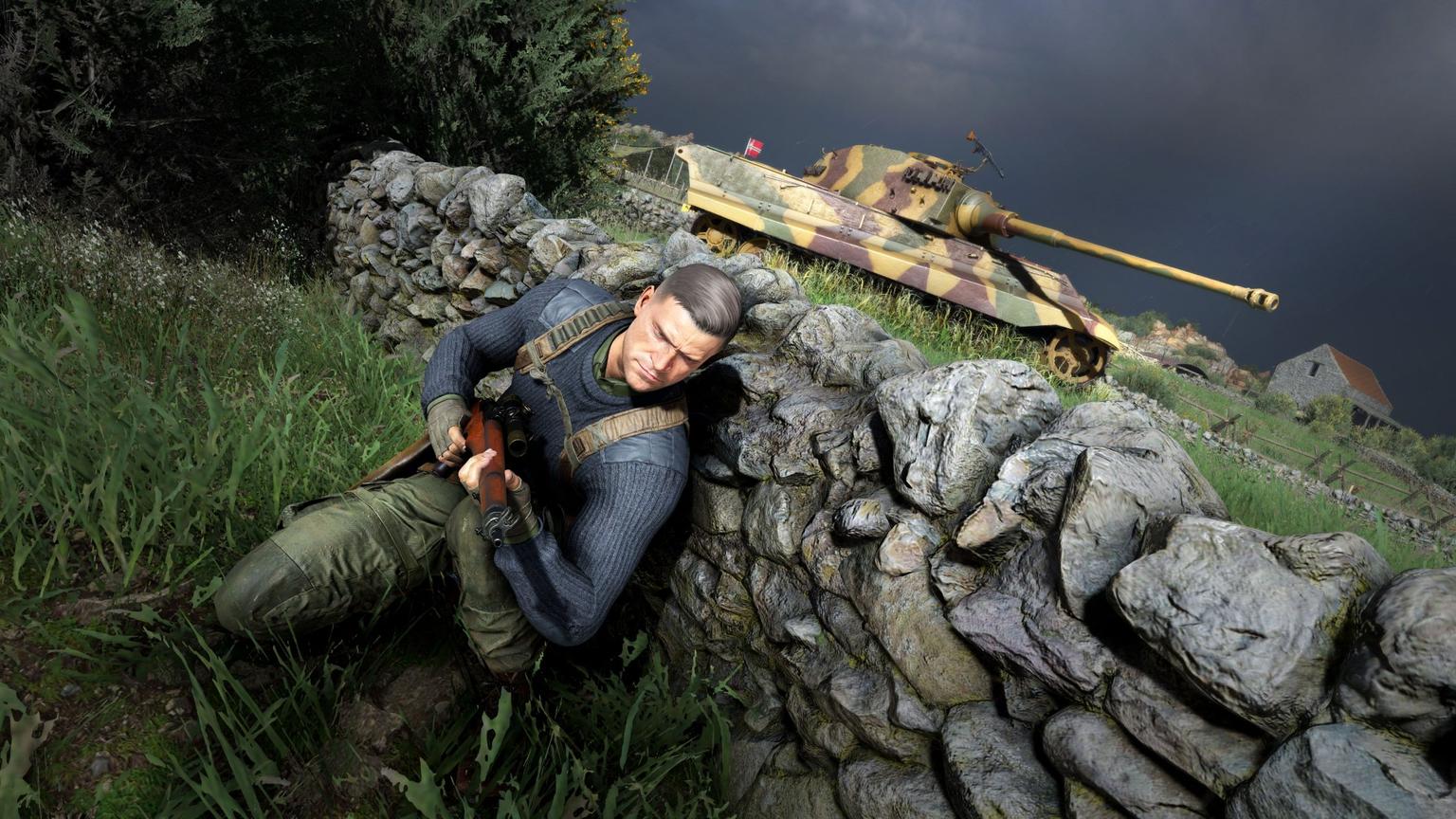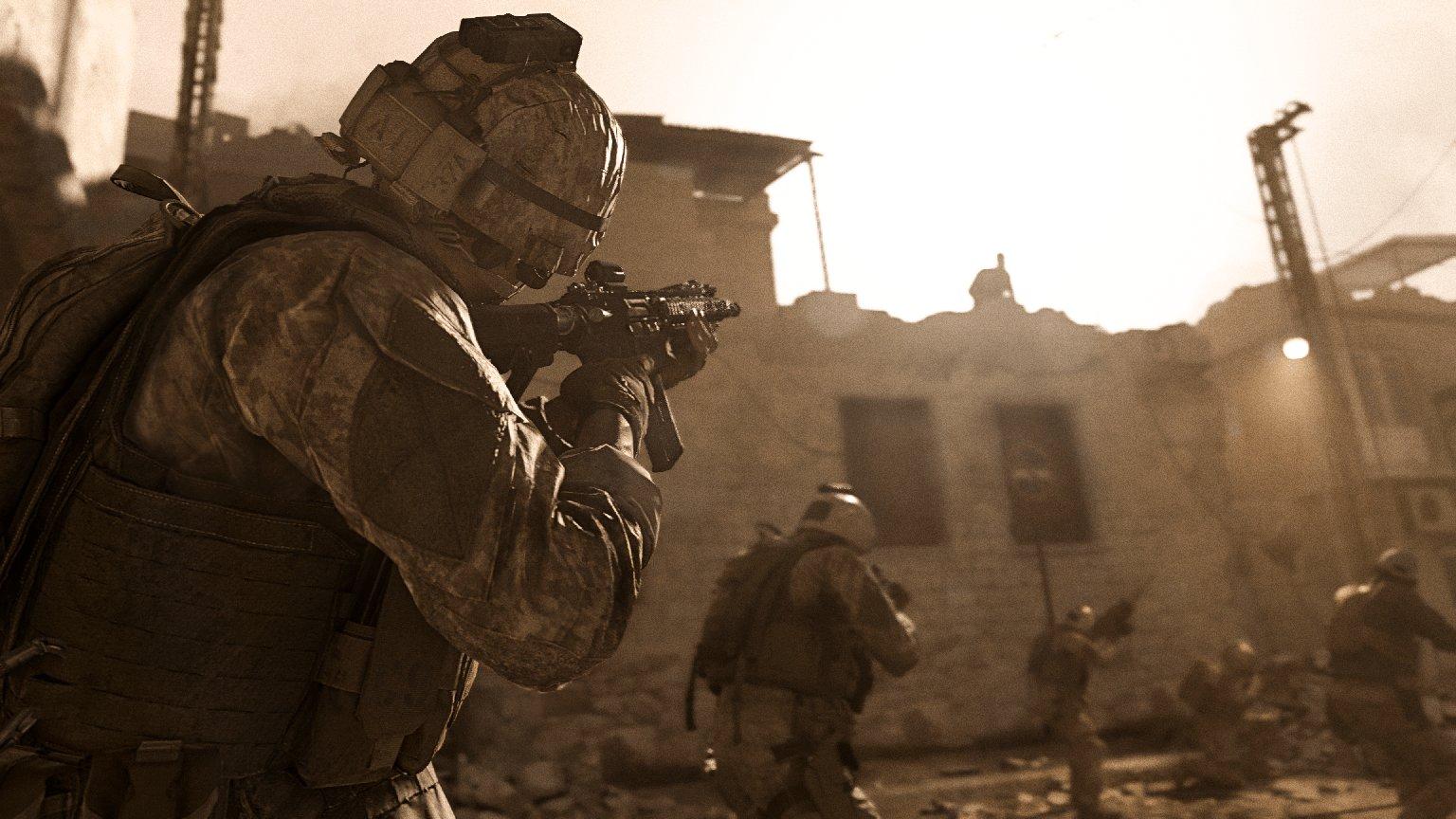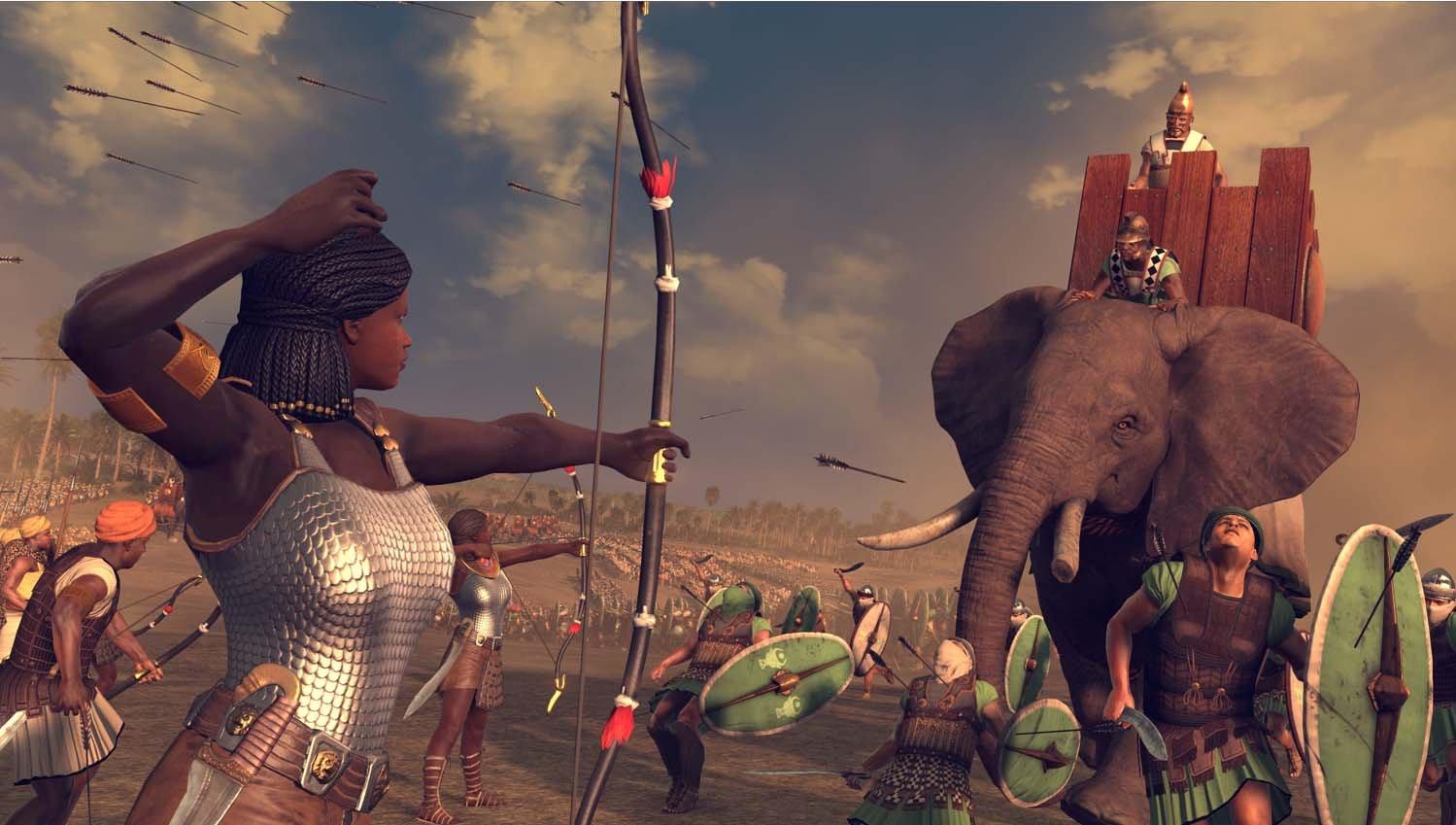How playing at digital soldiers shapes our perception of war

As video games based on war have become increasingly sophisticated, so has their relationship with historical conflicts. With a new exhibition on the subject opening at IWM London, Chris Fuller looks at how the gaming world is reflecting the real world.
A version of this article first appeared in the autumn 2022 issue of Art Quarterly, the magazine of Art Fund.
Despite being comparatively new, with the first commercial gaming platform emerging in 1971, the video game industry has, over the past decade, come to surpass the movie industry as the most lucrative form of global entertainment media. And given how quickly the medium is evolving – as a narrative vehicle, an immersive experience and an ambitious artform – now is a good time to look at how developers have been ‘gamifying’ humanity at its most tragic and destructive, using the theme of conflict, and to ask: how is our interaction with historical warfare managed through game design and storytelling, and how can this in turn shape our perception of war?
The defining quality of video games is their interactivity. Games based upon historical events invite the public to enter virtual worlds and to have a constructive dialogue about another temporal space through gameplay. The benefit in leveraging real historical wars is clear. The aesthetics and scenarios are pre-designed, and developers can capitalise on overlap with other mediums such as books, films and educational courses. This prior knowledge prevents players from becoming overwhelmed by background information and provides initial contextualisation. But the medium brings with it a special tension. While movies may deal with the challenges of combining saying something meaningful about war, respecting the memory of combatants and engaging the audience in a way that ensures financial success, they at least grant screenwriters and directors control over the tone, pacing and thematic vision. Historical war games, however, must meet these challenges while also working with the biases of the medium, namely player agency and a satisfying gameplay loop.
The gameplay loop is the thing players spend most of their time doing, and so it must be enjoyable and rewarding. In popular war games this loop is almost always centred on combat, the basic mechanics of which have remained largely the same since the first historically themed first-person shooter, Wolfenstein 3D, featuring the character of an Allied spy (one who in fact engages in a lot more combat than espionage) during the Second World War, was released in 1992. The player progresses through a level, aiming their weapon with some form of controller, to eliminate the enemies until they reach an endpoint. The point-and-click control reflects the act of translation between the physical input on the part of the player, and the virtual output in the game world.
The necessary process of simplification and abstraction to ensure the game remains enjoyable for the player clashes with aims of historical accuracy. Injury regenerates, and death is followed by the player coming back to life or ‘respawning’. Over the years core mechanics have been enhanced with hit markers, headshots that kill opponents instantly, throwing and returning grenades, improved movement such as climbing, sliding and diving into cover, and in cases such as the Sniper Elite series – a third-person shooter also set during the Second World War – slow-motion animations showing the player the impact of their well-placed shots. The genre is designed to let the player experience feeling skilful alongside a sense that they are impacting the virtual world through their own agency. While science-fiction titles such as Doom (in which the player takes on the role of the superhuman ‘Doom Slayer’ as he battles demons crossing dimensions from Hell) and
Halo (which casts the player as the genetically modified Spartan soldier ‘Master Chief’ as he fights to stop an alien alliance from triggering an intergalactic apocalypse) can lean into this playstyle and glorify the player as a hero, games claiming a historical heritage need to try to balance the abstraction of the genre with a more grounded reality. The challenge for developers has been to consider how a gamified experience can also invoke reflection about warfare and killing, while encouraging and rewarding that action.
Increasing processing power enables ever more realistic renderings of the past, which convey the viscerally destructive nature of war
One way developers have sought to represent warfare in a more nuanced way is through tweaks to the game mechanics. Video game developer Dice altered the respawn system in the opening level of its First World War-themed Battlefield 1 to emphasise the sheer waste of life that occurred during the conflict. Each time the player’s character dies, the game reveals their name, date of birth and death before respawning them as another soldier elsewhere on the artillery-shattered front line. Within minutes the player has witnessed first-hand the loss of dozens of lives for no territorial gain. Gearbox Software’s World War II series Brothers in Arms, and Pandemic Studio’s Iraq War-themed squad-based game Full Spectrum Warrior introduced a suppression mechanic – in gameplay terms a strategy by which, for example, continuous fire by squad mates on an opponent directly reduces that enemy opponent’s ability to fire back accurately, effectively pinning down opponents as you outflank them. But it also imbues the ‘enemy’ with a psychological reaction of ‘seeking cover’, transforming them from emotionless AI into something more human. Similarly, advances in computational power have seen developers programme enemies to flee if their losses are too heavy, dive away from grenades and writhe in pain if injured — all markers which humanise the virtual opponents.
Increasing processing power also enables the creation of ever more realistic renderings
of the past through which to communicate the viscerally destructive nature of war. Call of Duty 4’s ‘Death from Above’ level, released in 2007 and remastered in 2016, for example, is eerily realistic in its depiction of the player providing close air support from a gunship. For an artform that is barely half a century old, the technical advances have been staggering, and continued innovations rightly bring questions as to how far we can push immersion before we have pushed it too far. Interestingly, the same concerns have been raised in the opposite direction. From Pentagon videos of airstrikes during the first Gulf War, to the imagery of drone strikes that came to characterise America’s War on Terror, there are concerns that increased remoteness and abstraction in actual warfare is creating a ‘PlayStation’ mentality, virtualising real violence. But initial evidence of this recent phenomenon reveals that no matter how far a real-life situation may appear gamified, participants know the difference between deleting pixels controlled by a game engine and taking real lives. And PTSD, emotional exhaustion and suicide rates among those engaged in remote warfare can match, or even exceed, those of ground combatants. As for gamers, the social impact of violent video games remains contested, but the most recent and comprehensive research rejects the hypothesis that games have a meaningful long-term impact on aggression, arguing that players can maintain a healthy disconnect between simulation and reality, regardless of this increased immersion.

Developers’ most deliberate effort to provide meaningful reflection on warfare has been through narrative elements. The first Call of Duty, released in 2003 and set during World War II, opens with the statement, ‘In the war that changed the world, victory was not achieved by one man, but by the lives of many.’ This sentiment is reflected in a narrative structure that allows the player to experience multiple perspectives from British, American and Russian soldiers in various theatres. Building on this, Battlefield 1’s campaign offers a series of standalone ‘war stories’, reflecting scholarship’s turn toward global history by letting the player control an Italian commando battling AustrianHungarians in the Dolomites, an Anzac at Gallipoli and a female Bedouin guerrilla ambushing Ottoman soldiers in the Arabian Peninsula. In its World War II follow-up, Battlefield 5, Dice evolved its narrative framing by including a war story focused on a German tank crew as they lose faith in the reasoning behind their nation’s war. Importantly, by placing the player in the tank alongside the disillusioned crew, the level helps contextualise the mindset of the enemy, not as generic Nazi bots, but as individuals who were shaped by their respective experiences, culture, and ideological beliefs.
Video games are not just reflections of the historical period they seek to recreate, but also products of the time in which they are created
Of course, narrative elements are only as strong as the writing, and their historical reflections only as accurate as the developer’s own research and interpretations. But players are not only empowered to interact with the past, but also to analyse and critique developer’s versions of it, with some engaging collaboratively as a community on games forums to debate the historical merits of the games. While mostly a positive discussion about public history, there have also been negative reactions to attempts to balance historical accuracy with game-player inclusivity. When Creative Assembly decided to update its strategy game Total War: Rome II (set during the Roman Empire) in March 2018,
to increase the number of female commanders in certain armies, there were claims that the company was pandering to ‘social justice warriors’. Similar criticism befell Dice when Battlefield 5 – released the same year – included the option to choose female avatars for all in-game factions. An online campaign was launched against both companies over the real and perceived inaccuracy. A great many other factors could have been highlighted to show historical discrepancies, but in addressing gender the developers stumbled into the culture wars, with calls for historical accuracy used by a minority as a tool to deny other players agency and diversity.
What this reveals is that these games are not just reflections of the historical period that they seek to recreate, but also products of the time in which they are created. The Second World War is not just popular with developers due to nostalgia, recognition and the compatibility of its combat with the point-and-click gameplay loop, but narratively the war benefits from the perception that it was righteous, giving the player a morally just cause. The past 20 years of warfare have been more ambiguous, characterised by the participation of non-state actors and controversial foreign interventions. It is against this background that games such as Call of Duty’s Modern Warfare trilogy (released in 2007, 2009 and 2011) were produced with more contemporary conflicts reflected via fictional narratives that see a single terrorist incident spark a global war, justifying the Bush-
era War on Terror. The 2019 reboot, Call of Duty: Modern Warfare, promotes a similar perspective.

What this more mature content reveals is that video games have left their adolescence. In the span of a generation, they have blossomed from niche entertainment into a global market with a remarkable expansion of the demographics that make up the gaming community. Despite this, there remains a stigma to gaming, perhaps driven by the speed of its growth, the simplistic games of its emergent years or the moral panics that accompanied the medium’s push to the mainstream (often prompted by developers courting controversy to raise the profile of their games). Whatever the reason, this has meant video games are frequently overlooked as sources and resources by historians and those who teach history.
This is why the Imperial War Museum’s decision to mount an exhibition exploring the relationship between video games and war is so important – it signals their significant influence upon perceptions, which needs to be taken seriously. Historians and educators should take time to explore the interesting questions video games raise: for those that seek to create a fixed representation of the past, how accurate is it? For games that eschew specific details to create instead systems for counterfactual representations, how do those systems function, and what does that say about the developer’s vision of the past? Is their version of the past exclusive or inclusive? And when incorporating video games into education or research, teachers and historians should keep in mind that they are interactive, with the mechanics being as much a part of their treatment of war as their content.
And so, where possible, students and historians should engage fully, experiencing them as their developers intended before making judgments about their portrayal of the past. Developers stand at the frontier of this rapidly evolving artform. There is no path laid out for them, but they should be conscious of the responsibility they hold in shaping our perceptions of war, past and present. They should continue to find innovative ways to use the power of the medium to communicate meaningful messages about something as complicated as war, and our relation to it, while providing the next generation of entertainment.
’War Games: Real Conflicts | Virtual Worlds | Extreme Entertainment’, IWM London, 30 September 2022 to 28 May 2023. 50% off exhibitions with National Art Pass.
Each issue of Art Quarterly contains previews, reviews, long reads and artist interviews relating to current and upcoming exhibitions at museums, galleries and historic houses across the UK, as well as news on the impact of Art Fund’s charitable programme.
Become an Art Fund member to receive four issues of Art Quarterly per year and join a community of 130,000 art lovers enjoying free or reduced-price venue entry, and up to 50% off exhibitions, with their National Art Pass. Already a member? Renew your membership today.
Art Fund is the national fundraising charity for art in the UK. Donate to Art Fund and help develop the collections of museums, galleries and historic houses, place works of art of national significance in public collections, fund training and career-development opportunities for museum professionals, and ensure as many people as possible can access and enjoy art.